NPs Basic Information
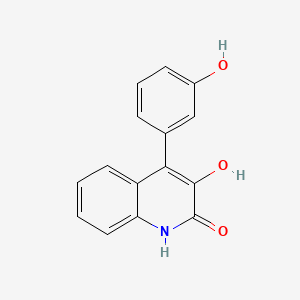
|
Name |
Viridicatol
|
| Molecular Formula | C15H11NO3 | |
| IUPAC Name* |
3-hydroxy-4-(3-hydroxyphenyl)-1H-quinolin-2-one
|
|
| SMILES |
C1=CC=C2C(=C1)C(=C(C(=O)N2)O)C3=CC(=CC=C3)O
|
|
| InChI |
InChI=1S/C15H11NO3/c17-10-5-3-4-9(8-10)13-11-6-1-2-7-12(11)16-15(19)14(13)18/h1-8,17-18H,(H,16,19)
|
|
| InChIKey |
QIJIOTTYIGBOQA-UHFFFAOYSA-N
|
|
| Synonyms |
Viridicatol; 14484-44-7; 3-hydroxy-4-(3-hydroxyphenyl)-1H-quinolin-2-one; 2(1H)-Quinolinone, 3-hydroxy-4-(3-hydroxyphenyl)-; 45P12JNE0L; Carbostyril, 3-hydroxy-4-(m-hydroxyphenyl)-; UNII-45P12JNE0L; 3-Hydroxy-4-(3-hydroxyphenyl)-2(1H)-quinolinone; 3-hydroxy-4-(3-hydroxyphenyl)quinolin-2(1H)-one; MEGxm0_000057; ACon0_001482; DTXSID60893995; ZINC5117508; NSC794085; NSC-794085; 4-(3-Hydroxyphenyl)-2,3-quinolinediol #; HY-116474; CS-0065593; F76730; 3-hydroxy-4-(3-hydroxyphenyl) quinolin-2(1h)-one; Q27258853; 3-hydroxy-4-(3-hydroxyphenyl)-1,2-dihydroquinolin-2-one; NCGC00380299-01!3-hydroxy-4-(3-hydroxyphenyl)-1H-quinolin-2-one
|
|
| CAS | 14484-44-7 | |
| PubChem CID | 115033 | |
| ChEMBL ID | NA |
*Note: the IUPAC Name was collected from PubChem.
Chemical Classification: |
|
|
|---|
——————————————————————————————————————————
NPs Species Source
| Endophyte ID | Endophyte Name | Family | Genus | Taxonomy ID | GenBank ID | Closest GenBank ID | Reference | |
|---|---|---|---|---|---|---|---|---|
| Endophyte ID | Endophyte Name | Family | Genus | Taxonomy ID | GenBank ID | Closest GenBank ID | Reference |
NPs Biological Activity
| Bioactivity Name | Target ID | Target Name | Target Type | Target Organism | Target Organism ID | Potency of Bioactivity | Activity Type | Value | Unit | Endophyte ID | Endophyte Name | |
|---|---|---|---|---|---|---|---|---|---|---|---|---|
| Bioactivity Name | Target ID | Target Name | Target Type | Target Organism | Target Organism ID | Potency of Bioactivity | Activity Type | Value | Unit | Endophyte ID | Endophyte Name |
NPs Physi-Chem Properties
| Molecular Weight: | 253.25 | ALogp: | 2.0 |
| HBD: | 3 | HBA: | 3 |
| Rotatable Bonds: | 1 | Lipinski's rule of five: | Accepted |
| Polar Surface Area: | 69.6 | Aromatic Rings: | 3 |
| Heavy Atoms: | 19 | QED Weighted: | 0.622 |
——————————————————————————————————————————
NPs ADMET Properties*
ADMET: Absorption
| Caco-2 Permeability: | -5.042 | MDCK Permeability: | 0.00001090 |
| Pgp-inhibitor: | 0.005 | Pgp-substrate: | 0.001 |
| Human Intestinal Absorption (HIA): | 0.023 | 20% Bioavailability (F20%): | 0.821 |
| 30% Bioavailability (F30%): | 0.305 |
——————————————————————————————————————————
ADMET: Distribution
| Blood-Brain-Barrier Penetration (BBB): | 0.096 | Plasma Protein Binding (PPB): | 97.25% |
| Volume Distribution (VD): | 0.355 | Fu: | 1.45% |
——————————————————————————————————————————
ADMET: Metabolism
| CYP1A2-inhibitor: | 0.969 | CYP1A2-substrate: | 0.121 |
| CYP2C19-inhibitor: | 0.338 | CYP2C19-substrate: | 0.055 |
| CYP2C9-inhibitor: | 0.421 | CYP2C9-substrate: | 0.792 |
| CYP2D6-inhibitor: | 0.539 | CYP2D6-substrate: | 0.453 |
| CYP3A4-inhibitor: | 0.499 | CYP3A4-substrate: | 0.14 |
——————————————————————————————————————————
ADMET: Excretion
| Clearance (CL): | 5.596 | Half-life (T1/2): | 0.852 |
——————————————————————————————————————————
ADMET: Toxicity
| hERG Blockers: | 0.047 | Human Hepatotoxicity (H-HT): | 0.09 |
| Drug-inuced Liver Injury (DILI): | 0.973 | AMES Toxicity: | 0.277 |
| Rat Oral Acute Toxicity: | 0.114 | Maximum Recommended Daily Dose: | 0.023 |
| Skin Sensitization: | 0.419 | Carcinogencity: | 0.22 |
| Eye Corrosion: | 0.004 | Eye Irritation: | 0.531 |
| Respiratory Toxicity: | 0.741 |
——————————————————————————————————————————
*Note: the ADMET properties was calculated by ADMETlab 2.0. Reference: PMID: 33893803.
Similar Compounds*
Compounds similar to EMNPD with top10 similarity:
| Similar NPs | Similar Drugs | ||||||
|---|---|---|---|---|---|---|---|
| NPs ID | NPs 2D Structure | Similarity Score | TTD ID | Drug 2D Structure | Similarity Score | ||
| ENC003571 |  |
0.982 | D09LDR |  |
0.370 | ||
| ENC005446 |  |
0.762 | D02TJS | 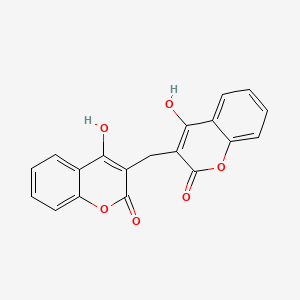 |
0.359 | ||
| ENC005445 | 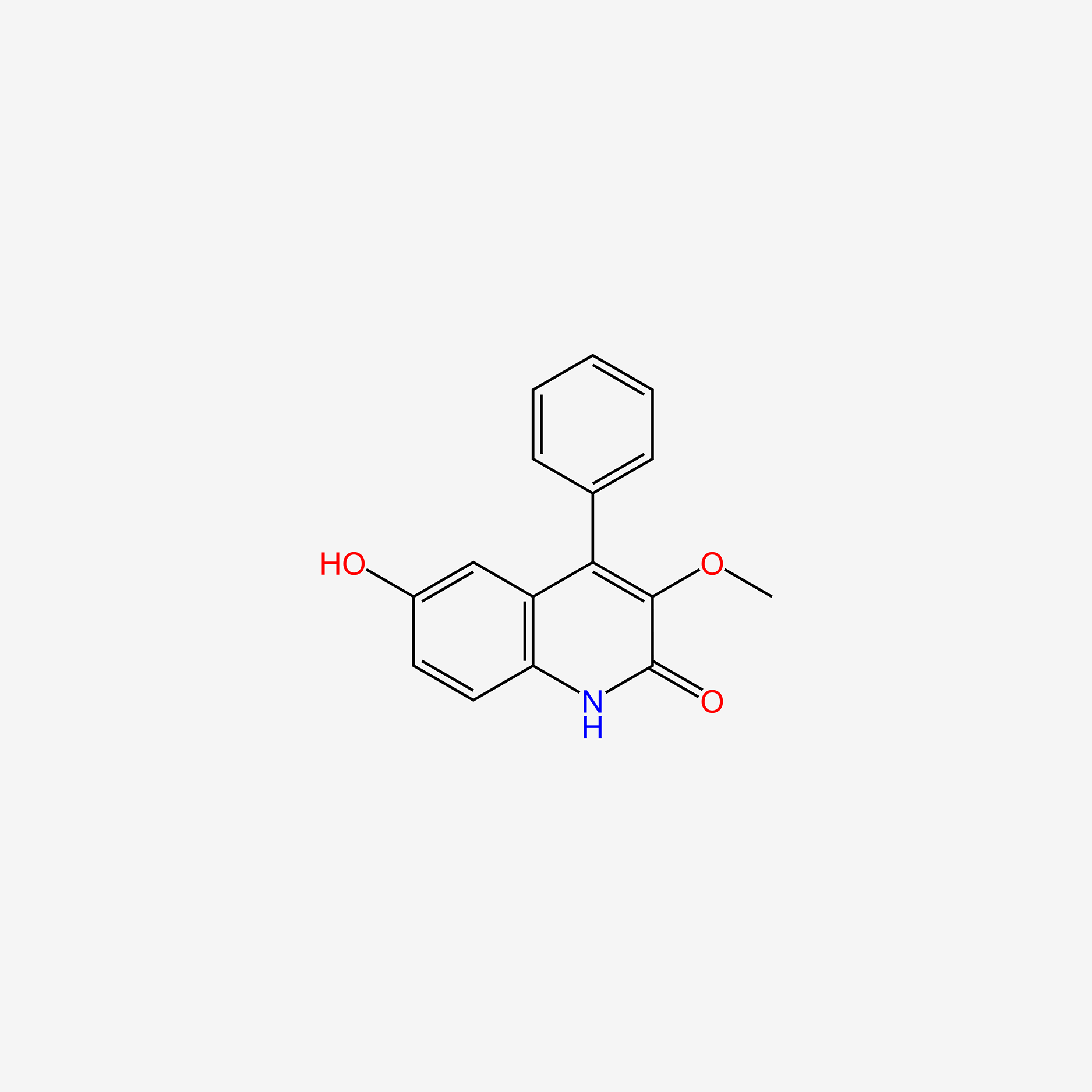 |
0.586 | D0QV5T | 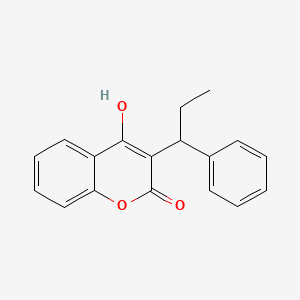 |
0.357 | ||
| ENC001109 |  |
0.535 | D0P3JU |  |
0.349 | ||
| ENC003390 | 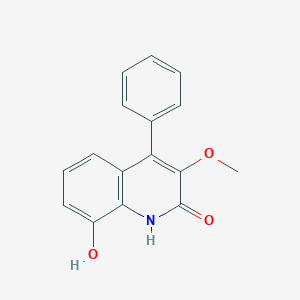 |
0.500 | D0J6WW | 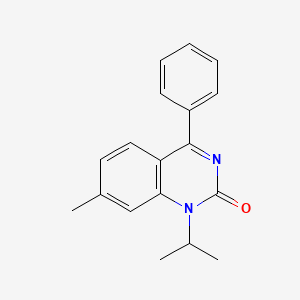 |
0.345 | ||
| ENC002926 |  |
0.443 | D04BNP | 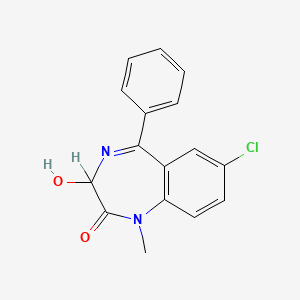 |
0.345 | ||
| ENC002154 | 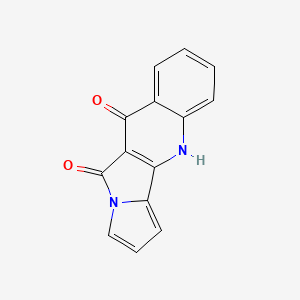 |
0.432 | D0R2OA |  |
0.341 | ||
| ENC002323 | 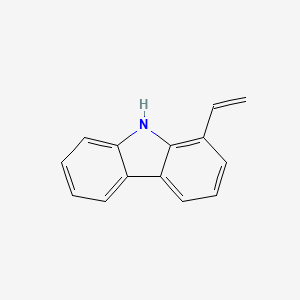 |
0.420 | D0T5WK | 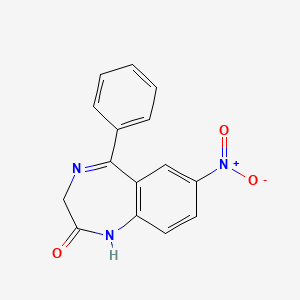 |
0.341 | ||
| ENC003516 |  |
0.416 | D06TJJ | 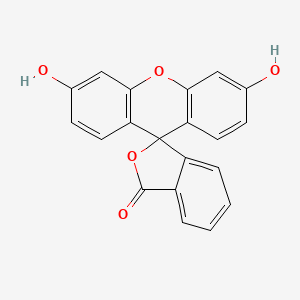 |
0.340 | ||
| ENC004650 |  |
0.415 | D07JVL | 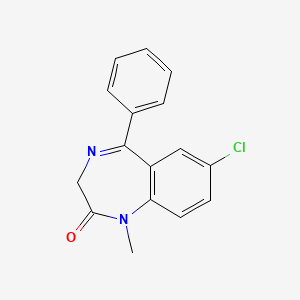 |
0.337 | ||